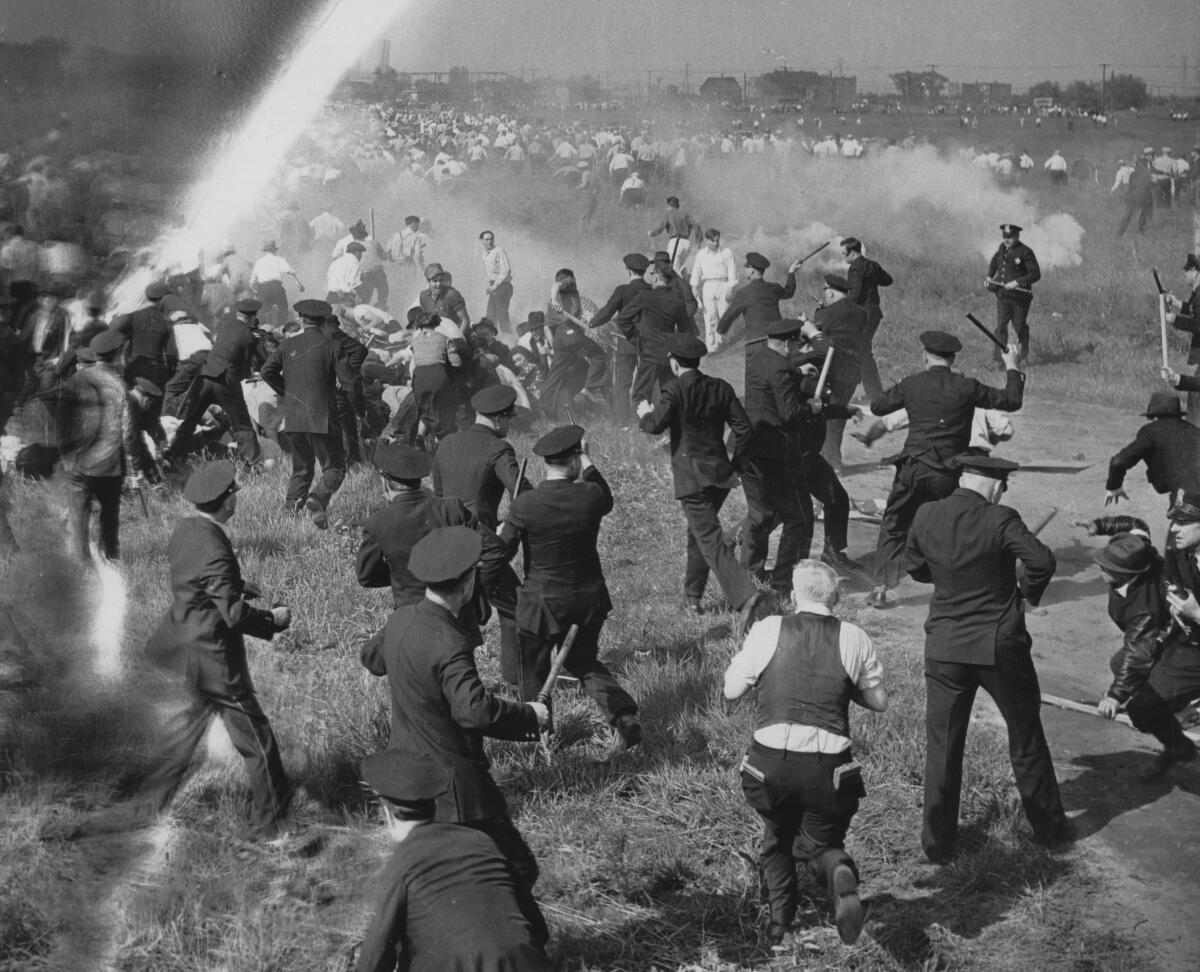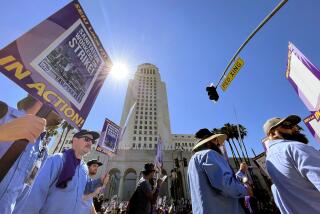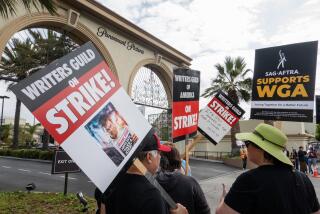Opinion: When unions and police clash: The Memorial Day Massacre you may not know about

After years of decline — in some industries, dormancy — labor union organizing in many fields is surging again. Once associated with blue-collar companies such as General Motors, worker unrest now grows at the likes of Amazon, Apple and Starbucks. A strike closed Los Angeles schools for three days in late March led by the Service Employees International Union. Now Writers Guild of America members walk picket lines as their strike, against the Alliance of Motion Picture and Television Producers, which began May 2, continues.
Decades ago, labor protests, picketing and strikes often led to violent confrontations between activists and local police, although that almost never happens today. This is partly due to lessons learned by both sides 86 years ago in Chicago, after police shot and killed 10 unionists in what has become known as the Memorial Day Massacre.
In 1937, not a single police officer or supervisor was punished for his part in the Chicago violence, a fact that often echoes today. And because the only film footage of the confrontation was suppressed by a leading news outlet, claims of “fake news” and “media cover-up” could have also applied back then.
With the economy still reeling during the Great Depression, it was a time of labor ferment in the U.S. The largest steel company, U.S. Steel, avoided a strike by offering workers what became industrial benchmarks: the eight-hour workday, time and a half for overtime and more. But smaller — though hardly small — steel companies across the Midwest and Pennsylvania, such as Bethlehem Steel, refused to budge. More than 70,000 workers at those plants went on strike in late May.
When workers set up picket lines outside Republic Steel in South Chicago, they were met by police wielding nightsticks. To mobilize wider support, they scheduled a picnic near the Republic plant on May 30. When as many as 1,500 supporters turned out, including women and children, organizers called for a march to the well-guarded gates of the plant where they planned to legally picket.
Halfway to their goal, they were stopped by hundreds of Chicago police, all armed with pistols and some carrying ax handles provided by Republic. Marchers and police engaged in a heated discussion. It appeared nothing more serious was in the offing, but suddenly police hurled tear gas canisters — also supplied by Republic — and pistol shots rang out.
Accounts would vary on what sparked the deadly assault. Some marchers tossed stones and a tree branch, and police may have simply lost patience with a crowd that failed to disperse as ordered.
An estimated 40 marchers were shot within seconds. Doctors later determined that the majority were wounded in the back or in the side. Dozens more were sent to hospitals with severe head wounds after police chased, caught and clubbed retreating marchers. Ten died that day and in the days ahead.
For three weeks, newspapers across the country almost invariably described the unionists as “rioters” who left the police no choice but to use deadly force to keep them from attacking the plant. Then it emerged that a leading newsreel company, Paramount News, had a cameraman on the scene who had filmed almost the entire confrontation and aftermath.
Paramount failed to release the newsreel it prepared, claiming the footage might set off riots in movie theaters, but more likely to protect Chicago police and officials.
This caused a Senate subcommittee to subpoena the film footage, leading to sensational hearings at the end of June and in early July, where the star witness was an injured Mexican American activist. At the hearings, the footage was publicly screened for the first time.
Paramount now had little choice but to release a newsreel devoted to the incident. The Senate report placed full blame on police for the massacre. Yet no one would be punished for their actions that day, except for the dozens of unionists who had been arrested, jailed or fined.
Workers at the small steel plants returned without a contract. But there was this positive result: No labor showdown in the U.S. would ever come close to matching the death toll in the 1937 massacre, as strike leaders tried to avoid violent conflicts at all costs and police were determined to control labor actions without the use of firearms.
Of course, police shootings of unarmed citizens remain far too common, and often unpunished, today. But the legacy of the 1937 massacre provoked the first calls for police to be equipped with cameras to document arrests — anticipating the dashboard cams and body cams that reveal so many of the unjust shootings today.
Greg Mitchell is the director of “Memorial Day Massacre: Workers Die, Film Buried,” which can be watched at the KCET site, and is the author of a companion book with the same title.
More to Read
A cure for the common opinion
Get thought-provoking perspectives with our weekly newsletter.
You may occasionally receive promotional content from the Los Angeles Times.










